
About Andrew Cusack
 Writer, web designer, etc.; born in New York; educated in Argentina, Scotland, and South Africa; now based in London.
Writer, web designer, etc.; born in New York; educated in Argentina, Scotland, and South Africa; now based in London. read more
News
Blogs
Reviews & Periodicals
Arts & Design
World
France
Mitteleuropa
Knickerbockers
Argentina
The Levant
Africa
Cape of Good Hope
Netherlands
Scandinavia
Québec
India
Muscovy
Germany
Academica
A Sienese Gem Lost
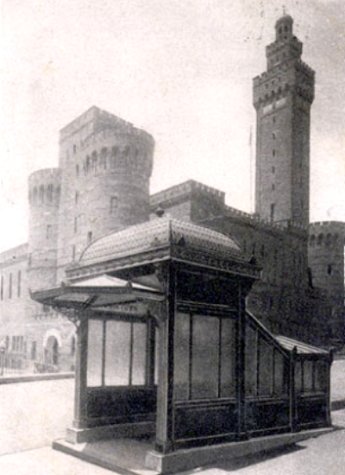
STEALING A GLANCE at the photo above, the viewer would easily be forgiven for mistaking the vista for that of a subway entrance in turn-of-the-century Siena, Italy. The proud medieval tower lurks over a comely metal-and-glass structure of continental flavor. However the city fathers of that ancient Italian municipality never deigned to erect an underground railway. The precise locus of the vista is far removed: it is the corner of Park Avenue and 33rd Street, and the building behind the subway entrance is not the town hall of Siena, but rather the armory of the 71st Regiment, New York National Guard.
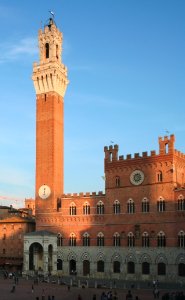 When the earlier Romanesque Revival armory of the Seventy-First Regiment burnt down in 1902, it was decided to build the new armory on the same, though slightly enlarged, site. The 1905 construction was built to the design of the architectural firm of Clinton and Russell, and was clearly inspired by the Palazzo Pubblico (the town hall, photo at right) of Siena, on that city’s Piazza de Campo. While the Seventh Regiment Armory contains the finest interiors of any military building in City, and probably the entire Empire State, the exterior of the Seventy-First’s armory was far superior. Even though the interior was not to the same lofty standard as the Seventh, it was by no means lacking, for it had all the wood-panelled rooms filled with military regalia from times gone by which one expects of New York’s armories from the period.
When the earlier Romanesque Revival armory of the Seventy-First Regiment burnt down in 1902, it was decided to build the new armory on the same, though slightly enlarged, site. The 1905 construction was built to the design of the architectural firm of Clinton and Russell, and was clearly inspired by the Palazzo Pubblico (the town hall, photo at right) of Siena, on that city’s Piazza de Campo. While the Seventh Regiment Armory contains the finest interiors of any military building in City, and probably the entire Empire State, the exterior of the Seventy-First’s armory was far superior. Even though the interior was not to the same lofty standard as the Seventh, it was by no means lacking, for it had all the wood-panelled rooms filled with military regalia from times gone by which one expects of New York’s armories from the period.
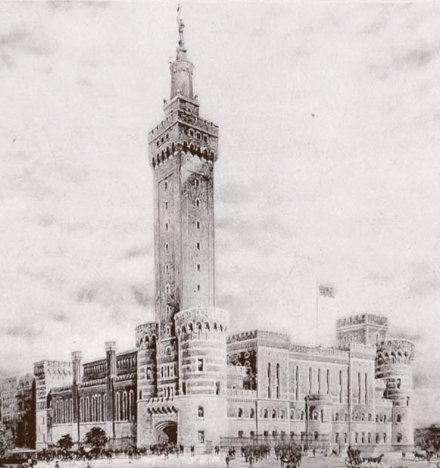
Clinton & Russell’s design for the 71st Regiment Armory.
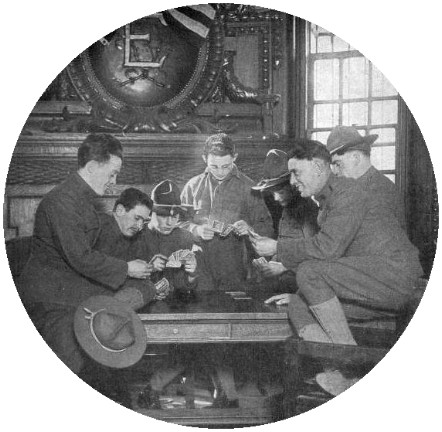
Soldiers enjoined in a game of cards in the E Company chambers of the Seventy-First Regiment Armory.
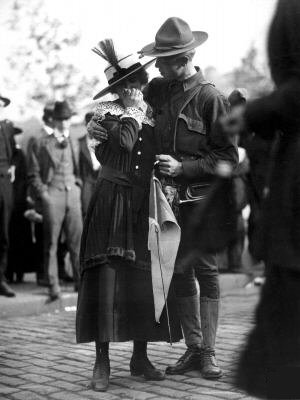
January 1, 1917: A soldier of the 71st bids farewell to his sweetheart as he prepares to leave for Camp Wadsworth, S.C. and then on to Europe, and war.
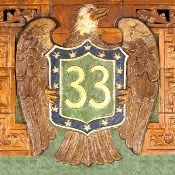 The subway beneath Park Avenue had a station adjacent to the armory on 33rd Street, which was architecturally signified by the faience eagles, made by Heins & Lafarge, which bedecked the station walls. Whenever you see a subway station’s street number held on a shield by an eagle, it means that a National Guard armory was once located above, or nearby. The eagles and shields from a closed platform of the Union Square-14th Street station have been reassembled elsewhere in the large station.
The subway beneath Park Avenue had a station adjacent to the armory on 33rd Street, which was architecturally signified by the faience eagles, made by Heins & Lafarge, which bedecked the station walls. Whenever you see a subway station’s street number held on a shield by an eagle, it means that a National Guard armory was once located above, or nearby. The eagles and shields from a closed platform of the Union Square-14th Street station have been reassembled elsewhere in the large station.
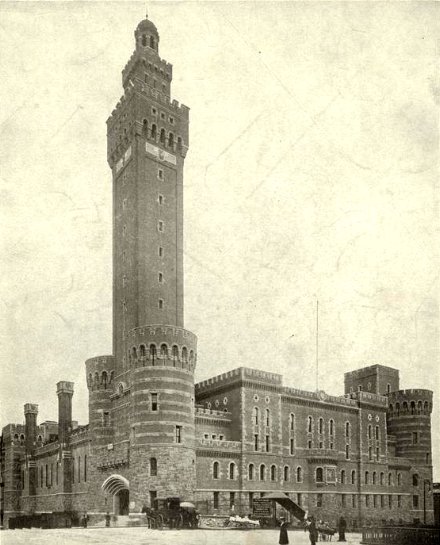
Despite the grandeur of the armory, the building was still somewhat unloved. Only thirty years after it was erected, Time magazine rather unfairly called it “Manhattan’s ugly old brownstone 71st Regiment Armory”. It was, of course, a place of history. True to its original purpose, it was not only the home of one of the more prominent regiments of New York’s National Guard, but also served as the headquarters of the state’s reknowed 27th Division — “O’Ryan’s Roughnecks” — which included the 71st, the 7th, and other New York regiments. The massive drill hall was not only a functional site for military training but also a prominent civic meeting place. Exhibitions, expositions, labor rallies, fairs, and meetings were held in the hall, which had a capacity of 11,000 people. For example, it was here, in 1964, that the carpetbagging son of a bootlegger named Robert Kennedy won the nomination to the U.S. Senate from the state Democratic caucus. A year later, during the Great Northeastern Blackout, the armory took in 2,500 stranded souls until the lights came back on.
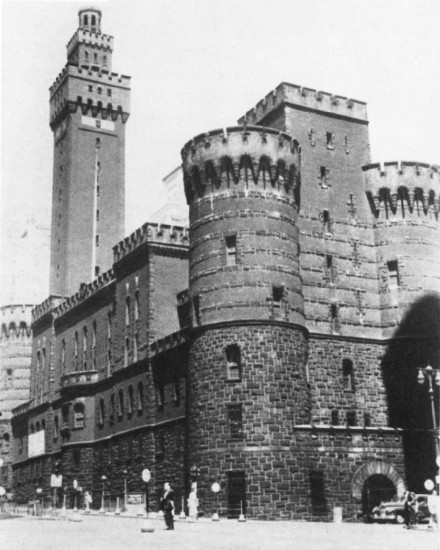
With it’s efficacious design, high standard of construction, and architectural beauty, the 71st Regiment Armory was singled out for destruction by the ‘monotony monitors’ (as my old Latin teacher used to call them). During the 1960s, they demolished this little corner of Siena on Park Avenue. The site lay fallow for a decade before it was redeveloped with a skyscraper, containing a public high school as part of the developer’s deal with the City. To add insult to injury, the Board of Education named the school after the pacifist and socialist Norman Thomas; salt in the wounds of New York’s fading military heritage. So if ever you’re strolling down Park Avenue in Murray Hill and you come upon an ominous modern skyscraper where socialism and capitalism combine, try to think of better days, and pray they soon return.
Search
Instagram: @andcusack
Click here for my Instagram photos.Most Recent Posts
- Sag Harbor Cinema March 26, 2025
- Teutonic Takeover March 10, 2025
- Katalin Bánffy-Jelen, R.I.P. March 3, 2025
- Substack Cusackiensis March 3, 2025
- In the Courts of the Lord February 13, 2025
Most Recent Comments
Book Wishlist
Monthly Archives
Categories



Oh, yes, that orange brick ick. (I used to live in Murray Hill and used the 33rd St station all the time.) What an improvement that old armory would be to the streetscape there. It would give Park (and the whole area) some much needed “breathing space”. Well, I guess our betters just know . . . better.
What a sad loss – and lets hope that ‘better days’ do soon return. Passionate about architecture, I can only shake my head in dismay at the buildings we’ve lost in Australia.
How strange that the 71st Regiment Armory was located on 33rd & Park — Only 10 blocks (less than 1 mile) from the armory of the 69th Regiment, at 26th & Park/Lexington (see: http://www.sixtyninth.net/armory.html). They were constructed only one year apart!
Well, the 69th may not be as elegant architecturally, but I still admire its castle-like massiveness, which to me conveys a sense of strength, courage and virtue, not to mention military utilitarianism. The 69th Armory web site expounds on this as follows:
Fortunately, the 69th was declared a national landmark, and thus won’t have to share the dismal fate of its poor brother in arms, the 71st.
Hello, The Albany Times Union ran a good story yesterday (2/14) about New York’s armories.
I grew up on 36th & 3rd in Murray Hill just a few blocks from the Armory and have many childhood memories of army men, army trucks and jeeps as well as Cat Shows and other events that took place there.
It was a sad loss for the area and the city.
As a child I grew up at 127 E. 34th Street, just east of the 71st Regiment Armory. I remember many soldiers, army jeeps & trucks around the armory area especially on E. 33rd Street between Lexinton & Park Avenues. This was back during the years 1946-1955. As a boy I used to climb into those M38 or M38A Jeeps I sit behind the wheel & shift those 3-Speed Gears pretending I am driving one of those jeeps.
I also remember the food shows, photography, antique cat & dog shows etc at this armory. My parents & grandparents used to own a stationary/cigar store at 127 E. 34th St. & whenever there was a show at the armory, my cousin, brother & I got free tickets.
I believe the armory was demolished in 1972
Hi – just wanted to let you know that the 71st was one of the few volunteer regiments to see action in the Spanish-American War, with about 109 men dying in the Battle of San Juan Hill and (mostly) from disease. The State of New York was so embarrased by the treatment the men received that in 1901 they funded a monument in Mount Hope Cemetery in Hastings-on-Hudson. It was designed by Clarence True and resembles the stone “Blockhouses” built by the Spanish to defend Santiago.